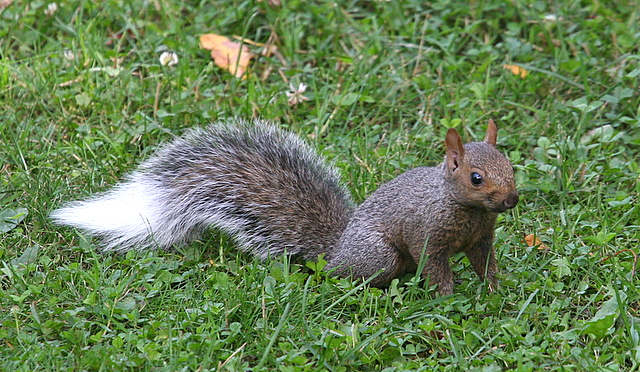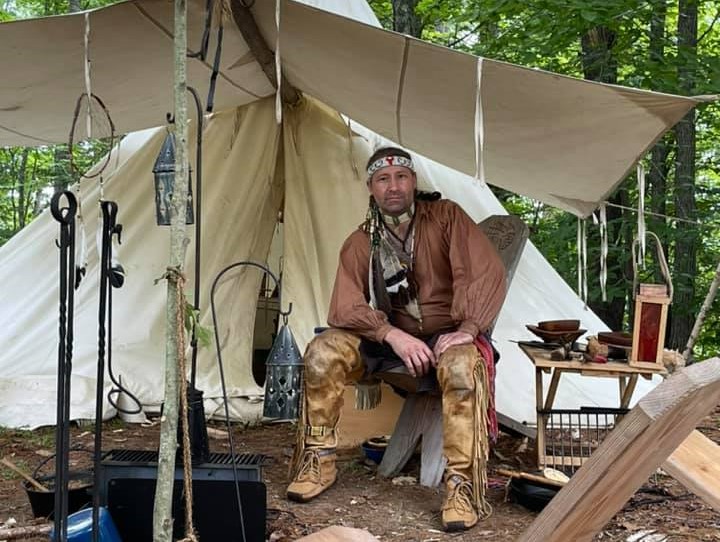SCORES & OUTDOORS: Seeing another rare wild animal

 by Roland D. Hallee
by Roland D. Hallee
This column was a long time coming. A couple of months ago, while driving to an engagement on Eustis Parkway, in Waterville, I noticed a grey squirrel cross the street in front of me. What’s so great about seeing a squirrel, you ask? Well, just a few weeks prior to this sighting, I had seen a black squirrel, in Vassalboro, which are somewhat rare. Well, this particular squirrel was even more rare. It’s tail was white on the tip. Never seen, or heard, that before.
Well, the reason it took so long to write this column is that there isn’t much information on them that I could find. My research took me to different parts of the country, but not in Maine. What does it mean when a squirrel has a white tail?
According to an article on globegazette.com, white-tailed squirrels are not albino squirrels. The color variation can come from a recessive trait that will occasionally appear in the genetic line. … If the mother has a white tail, that characteristic is carried to offspring.
I found that white-tailed antelope squirrels are found in the southwestern United States and the Baja California Peninsula of northwestern Mexico. Their range extends north to south from southwestern Oregon to New Mexico, and east to west from western Colorado to Baja California, Mexico.
So, what about here, in central Maine?
White-tailed squirrels are uncommon but locally they can become common. James H. Harding, an instructor and outreach specialist in the Department of Zoology at the Michigan State University Museum, comments: “These unusual squirrel coloration variations are not rare; they can turn up in any population and are probably related to the same types of genetic (or developmental) variants that can lead to albino (white) and melanistic (dark, black) individuals,” he said.
“Because inheritance of color involves many genes, and can be modified by environmental factors, it is more common to see these partially odd-colored variations. Presumably, these types of anomalies would be more common in suburban and urban areas, where inbreeding can occur, due to partial isolation of populations hemmed in by roads and other human activities.
“In addition, whereas wild squirrels with white tails might be more likely to be seen and killed by a predator, in the city they are more protected from these dangers.”
Of course, the fox squirrel also comes into play. In the western part of its range, it is gray above and rust colored on its undersides. In the southern part of its range, it is black and brown with a white stripe on its face and a white tip on its tail. The fox squirrel is also known as the eastern fox squirrel.
The fox squirrel’s natural range extends through most of the eastern United States, north into the southern prairie provinces of Canada, and west to the Dakotas, Colorado, and Texas. They are absent (except for vagrants) in New England, New Jersey, most of New York, northern and eastern Pennsylvania, Ontario, Québec, and the Atlantic provinces of Canada. More questions arise from this information, but not enough answers.
In Osage, Iowa, Vince Evelsizer, a wildlife biologist for the Iowa Department of Natural Resources, says the white-tailed squirrels are “unique.”
The white-tailed squirrel is also described in old folklore. What does seeing a white-tailed squirrel mean? They can be symbolic of good luck, especially because they’re so rare that you’re unlikely to find them. But when you do, they might symbolize good luck to you in the future. Peace. This type of squirrel is also symbolic of peace.
White squirrels also exist, but are far more rare than a white-tailed squirrel. Albino gray squirrels are the rarest form of white squirrel. Mammalogists estimate that the odds of a female gray squirrel giving birth to an albino offspring are 1 in 100,000.
Based on what I could find, the squirrel I saw that day in October could, and possibly was, a vagrant eastern fox squirrel. It all happened so fast I didn’t get a really good look at the rest of the coloration. But the white-tipped tail was very obvious.
Roland’s trivia question of the week:
Now that the Detroit Lions finally won a game, can you name the five NFL teams to go winless in a season, since 1944?









 (NAPSI)—Entering the second holiday season of the COVID-19 pandemic, Idahoans are eager to reconnect with family and friends and return to treasured holiday traditions. Some simple steps can keep family and friends healthy through their fall and winter celebrations.
(NAPSI)—Entering the second holiday season of the COVID-19 pandemic, Idahoans are eager to reconnect with family and friends and return to treasured holiday traditions. Some simple steps can keep family and friends healthy through their fall and winter celebrations. The statistics we hear about scams and fraud are nothing short of staggering and a new AARP survey shows that scams targeting veterans are on the rise. Scammers will stop at nothing to steal veterans’ benefits including pension payments and much more. Please consider the following scams and take a look at the survey results. Of those who lost money, the top scams reported include:
The statistics we hear about scams and fraud are nothing short of staggering and a new AARP survey shows that scams targeting veterans are on the rise. Scammers will stop at nothing to steal veterans’ benefits including pension payments and much more. Please consider the following scams and take a look at the survey results. Of those who lost money, the top scams reported include:


